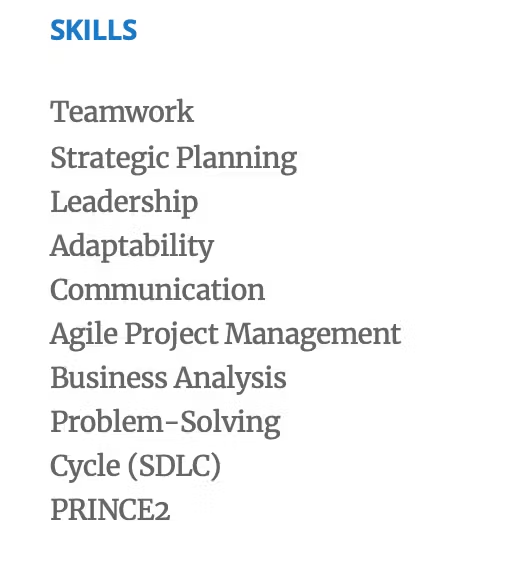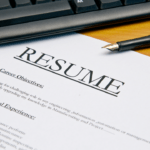
Bad Resume Examples and Recruiter-Backed Advice on How to Avoid These Common Mistakes
Creating a resume is more than just listing job experiences and skills; it’s about crafting a document that effectively represents your professional journey. Unfortunately, many jobseekers unknowingly make critical mistakes that can significantly impact their chances of landing an interview. From formatting errors to overused buzzwords, a poorly structured resume can be the difference between getting noticed and being overlooked.
In this comprehensive guide, we’ll break down some of the most common resume mistakes, provide real-life bad resume examples, and offer recruiter-backed advice on how to create a strong and effective resume.
Common Mistakes and Bad Resume Examples
Bad resumes typically fall into two categories: those that look unprofessional and those that make it difficult for recruiters to extract key information. Below, we analyze these common mistakes in detail and show how to avoid them.
1. Having a Resume That’s Too Long
A common mistake jobseekers make is including every job they’ve ever had, resulting in a lengthy and unfocused resume. Recruiters typically spend just a few seconds scanning each resume, so a lengthy document may lead to important details being overlooked.
Example of a bad resume:
- Lists every job, including part-time roles, from over 15 years ago.
- Includes excessive detail about irrelevant positions.
- Has unnecessary personal information such as hobbies and childhood achievements.
How to fix it:
- Limit your resume to one page unless you have over ten years of experience.
- Focus on your most relevant experience and key accomplishments.
- Use bullet points to keep descriptions concise.
2. Spelling and Grammar Mistakes
Nothing screams unprofessionalism like a resume riddled with typos and grammatical errors. Mistakes can make you appear careless and reduce your chances of being taken seriously.
Example of a bad resume:
- «Exelent comunication skills» (misspelled words)
- «Workded as a project manger» (incorrect verb tense)
- Punctuation errors making sentences hard to read
How to fix it:
- Use spell check and grammar tools to review your resume.
- Have someone else proofread it for a fresh perspective.
- Read your resume aloud to catch awkward phrasing.
3. Including Irrelevant Information
While personal achievements are valuable, they should be relevant to the job you’re applying for. Listing hobbies, unrelated certifications, or high school achievements from years ago can dilute the impact of your resume.
Example of a bad resume:
- Lists hobbies such as «collecting stamps» and «playing video games.»
- Mentions a summer job from over a decade ago that’s unrelated to the industry.
- Includes irrelevant skills such as «fluent in Latin» for a software engineering role.
How to fix it:
- Keep your resume relevant to the job you’re applying for.
- Highlight industry-specific skills and experience.
- Remove any outdated or unnecessary details.
4. Listing Work Experience in the Wrong Order
Your most recent and relevant experience should be listed first. If your work history is presented out of order, recruiters may assume the least relevant job is your most recent.
Example of a bad resume:
- Starts with a college internship from 15 years ago, pushing recent experience further down.
- Lists jobs without clear dates, making it difficult to understand career progression.
How to fix it:
- Use reverse chronological order (most recent job first).
- Clearly list job titles, company names, and employment dates.
- Emphasize key accomplishments in each role.
5. Not Optimizing for ATS
Many companies use Applicant Tracking Systems (ATS) to filter resumes. If your resume isn’t optimized, it might never be seen by a human recruiter.
Example of a bad resume:
- Uses complex formatting, including tables and images, making it unreadable for ATS.
- Fails to include job-related keywords.
- Uses an uncommon file type instead of PDF or DOCX.
How to fix it:
- Use a simple and professional format with clear headings.
- Incorporate job-related keywords naturally.
- Save your resume in ATS-friendly formats like PDF or DOCX.
6. Focusing on Responsibilities Rather Than Achievements
Hiring managers want to see evidence of your impact, not just a list of job duties.
Example of a bad resume:
- «Managed a team» (too vague)
- «Handled customer complaints» (lacks impact)
How to fix it:
- Focus on quantifiable achievements (e.g., «Led a team of 5, increasing productivity by 20%»).
- Use numbers and results to showcase impact.
7. Using Flashy or Bizarre Formatting
While creative resumes might stand out, they often make it difficult for recruiters to extract key information.

Example of a bad resume:
- Overuse of colors, icons, and unconventional fonts.
- Complex layout with columns that make reading difficult.
How to fix it:
- Stick to a clean, professional layout.
- Use standard fonts like Arial or Times New Roman.
8. Including Too Many Soft Skills
Soft skills are important, but listing too many can weaken your resume.

Example of a bad resume:
- Lists generic soft skills such as «team player» and «hardworking» without examples.
How to fix it:
- Demonstrate soft skills through accomplishments.
- Keep the skills section focused on hard skills relevant to the job.
9. Not Targeting Your Resume
A generic resume fails to show why you’re a great fit for a specific job.
How to fix it:
- Tailor your resume to each job by highlighting relevant skills and experience.
- Use job descriptions to guide resume customization.
10. Using Buzzwords
Buzzwords are overused phrases that don’t add real value.
Example of a bad resume:
- «Detail-oriented professional with excellent communication skills.»
How to fix it:
- Replace vague buzzwords with specific, measurable achievements.
How to Avoid These Mistakes
Writing a strong resume doesn’t have to be complicated. Here are three key strategies to ensure your resume is polished and professional:
- Proofread: Use spell check and ask others to review your resume.
- Keep it concise: Focus on relevant information and remove unnecessary details.
- Leverage AI tools: Use AI-powered resume checkers to optimize formatting and keyword usage.
Avoiding these common mistakes will help you create a resume that stands out for the right reasons and increases your chances of landing your dream job.









